Anthurium pendulifolium is one of the largest Anthurium species and among the more underrated strap leaf varieties. Its long, pendulous leaves are the envy of any aroid enthusiast.
This blog covers its natural habitat, outlines its morphological features, and provides a detailed care guide.
Covering everything from light requirements to its notable hybrid crosses, you’ll find helpful information about these remarkable anthurium plants.
In the end, you’ll find interesting information not covered anywhere else! So, let’s dive in.
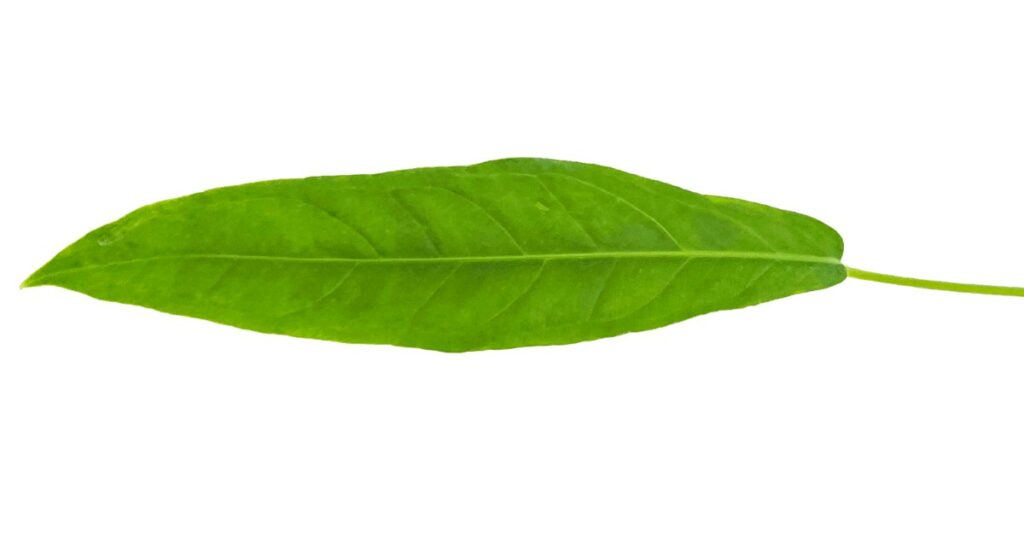
Anthurium Pendulifolium: Habitat and morphology
Anthurium pendulifolium is a pendent type found in tropical, moist, and wet forests ranging from Columbia to northern Peru. It grows as an epiphyte and can be found at elevations 90-550 m above sea level.
Anthurium pendulifolium belongs to the Pachyneurium section, which also includes recognizable bird nest anthuriums.
This species is characterized by pale green or yellowish-green oblong leaves that broaden at the center. These pendulous blades extend from long petioles and boast a unique bullate texture.
A standout feature is the geniculum located at the top of the petiole. It functions like a rotator, allowing the leaf blade to rotate and optimize its orientation towards light.
Those fortunate enough to nurture a mature specimen should anticipate expansive growth, with leaves potentially stretching up to 6 feet. As such, adequate space planning is crucial.
My Anthurium pendulifolium is still juvenile, but the leaves are already 30cm long. Contrary to the more compact strap leaf anthuriums like the vittarifolium or pallidiflorum, the pendulifolium leaves exhibit a more spread-out growth.
Anthurium pendulifolium is one of the larger pendent anthuriums. And if that’s your vibe, worth exploring are Anthurium Big Bull, Anthurium Spectabile, and Anthurium Sp Morona, which can rival it in size.
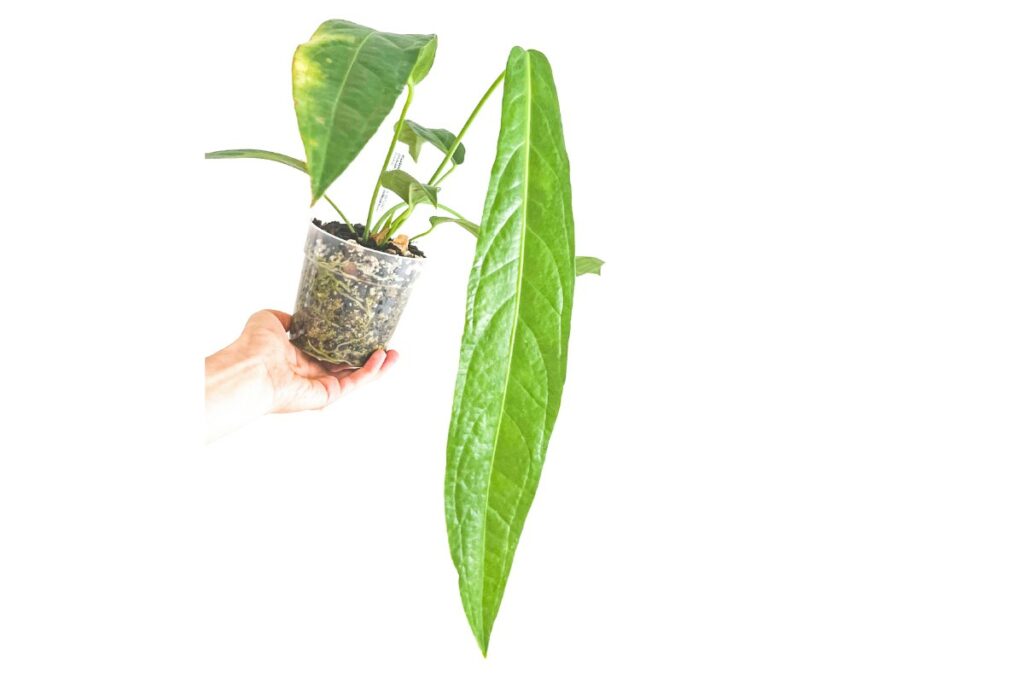
Inflorescence and infructescence
The inflorescence has reddish-purple/lavender spadix. The infructescence can sometimes be coiled, similar to that of Anthurium wendlingeri. The berries start purple but turn white at maturity.
The coiled infructescence may have a distinct purpose. It can enhance visibility to attract birds or bats that can spread the seeds. Or it might stagger the availability of mature fruits over time, ensuring only a limited number of berries are easily accessible at a given moment.
Reportedly, the fruit development can take anywhere from 3 to 13 months.
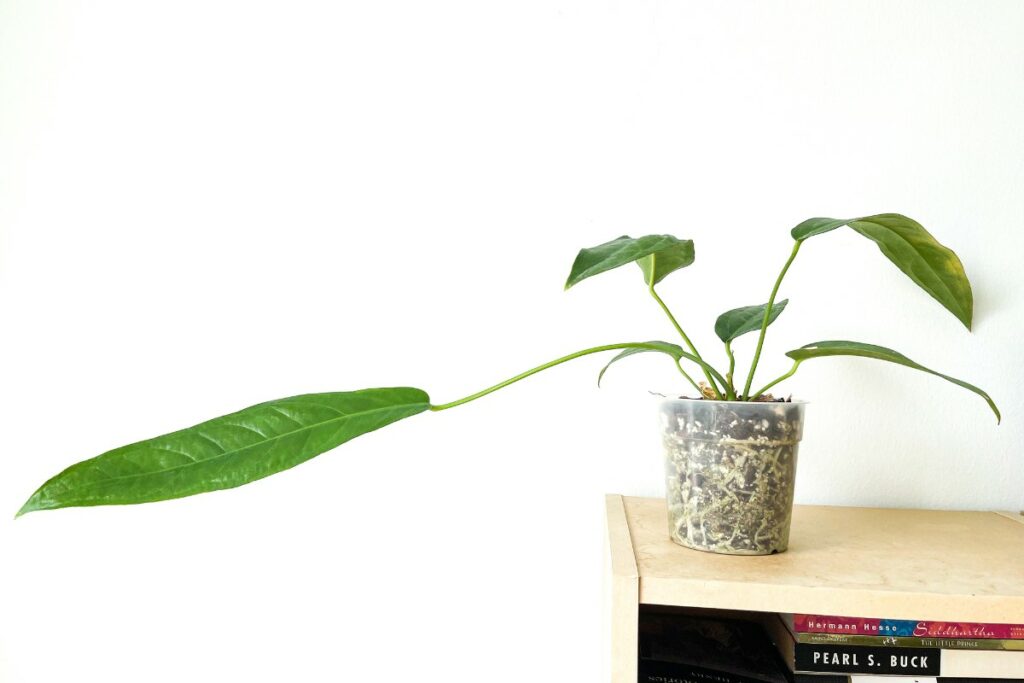
Care guide
Soil requirements
Anthurium pendulifolium, an epiphyte, naturally grows on trees rather than in soil.
In tropical rainforests, epiphytes anchor themselves to tree branches or trunks and absorb moisture and nutrients from the air and rain, rather than from the soil.
Therefore, when potting an epiphytic plant like Anthurium pendulifolium, use a well-draining potting mix. This type of medium mimics its natural habitat by providing good air circulation around the roots and ensuring quick drainage, preventing root rot.
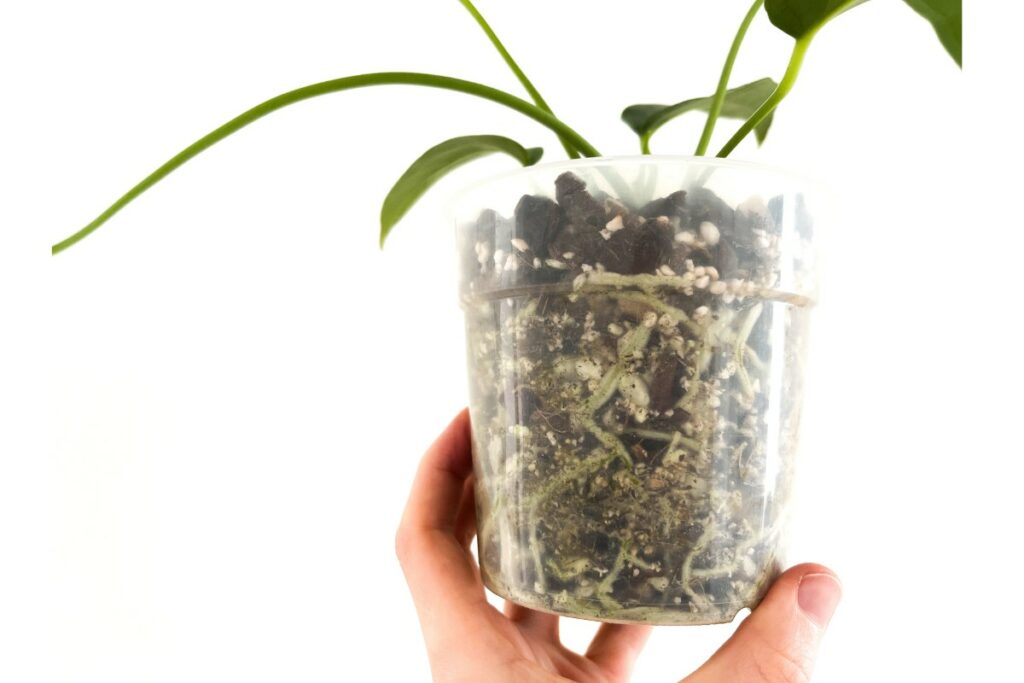
Regular potting soil is too heavy for this anthurium species.
I use my aroid mix recipe, which contains large bark pieces for the roots to attach to. This mix includes orchid bark, perlite, coconut husks, coco coir, and horticultural charcoal.
You can further enhance it with amendments like pumice or worm castings. I avoid using peat moss; it settles at the bottom over time and can block the drainage holes.
Some growers use pure sphagnum moss for epiphytic anthurium species in greenhouses. However, for indoor environments, I wouldn’t recommend this. Keeping the sphagnum moss moist at all times is difficult.
Read next: Ultimate Guide to Anthurium Soil: What to Put in Your Potting Mix
Light
Being an epiphyte, Anthurium pendulifolium requires more light than terrestrial types of anthuriums, such as Anthurium magnificum.
Provide it with bright, indirect light for maximum growth.
And if you want your juvenile plant to upsize quickly, place it under grow lights. Consider using pendant-style light bulbs suspended above the pendulifolium as one solution.
Another option is to keep the plant closer to the window, which will get more bright light or indirect sunlight. As the plant matures, I suspect it can handle low light situations at the expense of slower growth.
Read next: Anthurium Light Requirements: Everything You Need To Know
Water
Anthuriums require consistent moisture but don’t like overwatering. This is especially true for epiphytes such as Anthurium pendulifolium.
Originating from tropical regions, they thrive in a humid environment where their roots can access moisture and air. When watering anthuriums, it’s essential to use a well-draining soil mix to prevent waterlogging, which can lead to root rot.
A good rule of thumb is to water thoroughly but allow the substrate to dry between the waterings.
Read next: Water Like a Pro: An Essential Guide to Anthurium Watering
Temperature
Anthurium pendulifolium favors warmer conditions. The optimal temperature for them lies between 70-90 degrees farenheit. It is highly unlikely that you will exceed this range in ambient conditions, but be careful if you’re growing the plant in a grow tent.
It might melt if it is too close to the grow light. Cooler temperatures might stunt its growth, so avoid drastic temperature drops and cold drafts.
Humidity
Being a tropical plant, Anthurium pendulifolium loves high humidity. Go for 80% if you can. But, I found it one of the easiest anthuriums to acclimate to ambient conditions.
If the humidity drops significantly, especially during the winter season when the heating is on, you might see drying tips of the leaves. Placing a humidifier or growing the plant in a grow tent is another option.
Fertilizing
Feeding your Anthurium pendulifolium with a balanced slow-release fertilizer for optimal growth. You can supplement it with a liquid fertilizer diluted in strength with every watering.
If you want your pendulifolium to focus on pushing new leaves faster, opt for a fertilizer with a higher nitrogen content. But be careful. Over-fertilizing will burn the leaves.
Pests
Spider mites, mealy bugs, or thrips are the common culprits. As Anthurium pendulifolium matures and grows in size, pests will be less of an issue.
But watch out for these common pests when the plant is small, as they love to attack new growth. Find out common anthurium pests, and how to spot and eradicate them in my dedicated guide: 6 Most Common Anthurium Pests (and How to Deal With Them)
Diseases
Anthurium pendulifolium can be susceptible to various diseases, primarily caused by fungal or bacterial infections. Too dense of a potting mix and waterlogged substrate provides an ideal environment for the development of diseases.
Dive into my detailed blog to gain insights from personal experience and research on identifying, preventing, and treating the most common anthurium diseases.
Learn how to spot the common problems with my guide: Anthurium Diseases: Your Guide to Identification and Treatment
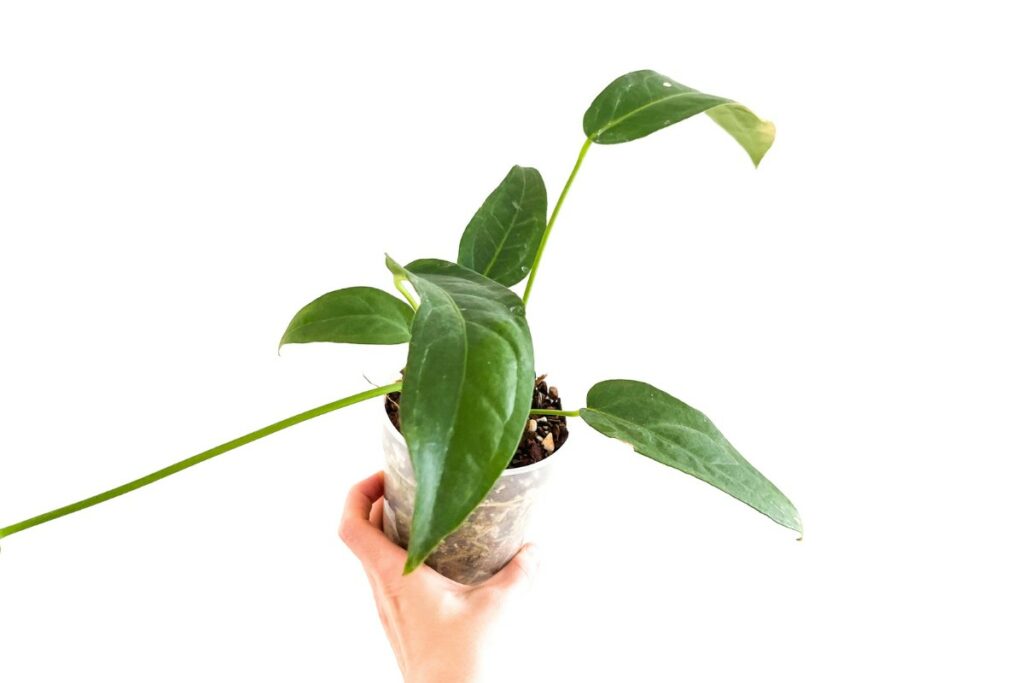
Little known information about Anthurium Pendulifolium
- Anthurium pendulifolium is also called “yakiya sugkip,” “kankur nuka,” “meko uko”, or “bare panga” by local populations.
- The Siona Indians from Putumayo, Colombia, use boiled and mashed leaves in a water bath to alleviate rheumatism symptoms.
On Growth
I imported my Anthurium pendulifolium six months ago, and it has since pushed out two new leaves.
While plants typically take time to acclimate, focusing primarily on root growth, my pendulifolium began producing fresh leaves once its root ball was robust enough to draw in nutrients.
Although two leaves in six months may seem like a slow growth, it spent the first four months establishing its root system. With each new leaf being substantially larger than the last, I can’t wait for it to become massive.
Anthurium Pendulifolium Hybrids
Now let’s explore some of the most notable Anthurium pendulifolium crosses.
Anthurium “Big Bill”
Anthurium Big Bill is a cross of Anthurium Cubense and Pendulifolium. This hybrid is one of the largest Anthuriums in the world, with leaves that can reach over 10 feet long. The leaves develop a slightly wavy edge when mature.
Anthurium Pendulifolium x Crenatum
The hybrid exhibits a bird’s nest appearance reminiscent of the crenatum. While the leaf texture is similar to the pendulifolium, its shape is more aligned with the crenatum’s bird-nest form.
Anthurium Pendulifolium x Crassinervium
Anthurium crassinervium is another bird’s nest type of anthurium, and the hybrid resembles that form. I’m not a fan.
Anthurium Crystallinum x Anthurium Pendulifolium
This cross appeared in one of the anthurium forums I belong to, but I have yet to see it elsewhere. I was surprised these two species can be crossed since they belong to different sections. The cross looks spectacular.
Think of an elongated leaf of crystallinum. It has shimmery silver veining after crystallinum but an oblong leaf shape after pendulifolium. A stunner!
Source: Thomas B. Croat, “A revision of Anthurium Section Pachyneurium (Araceae), Annals of Missouri Botanical Garden (1991), Vol 78, No 3. Accessed through Biodiversity Heritage Library

